Arena Wars, NBA Finals Edition: AmericanAirlines Arena vs. AT&T Center

Arena Wars, NBA Finals Edition: AmericanAirlines Arena vs. AT&T Center
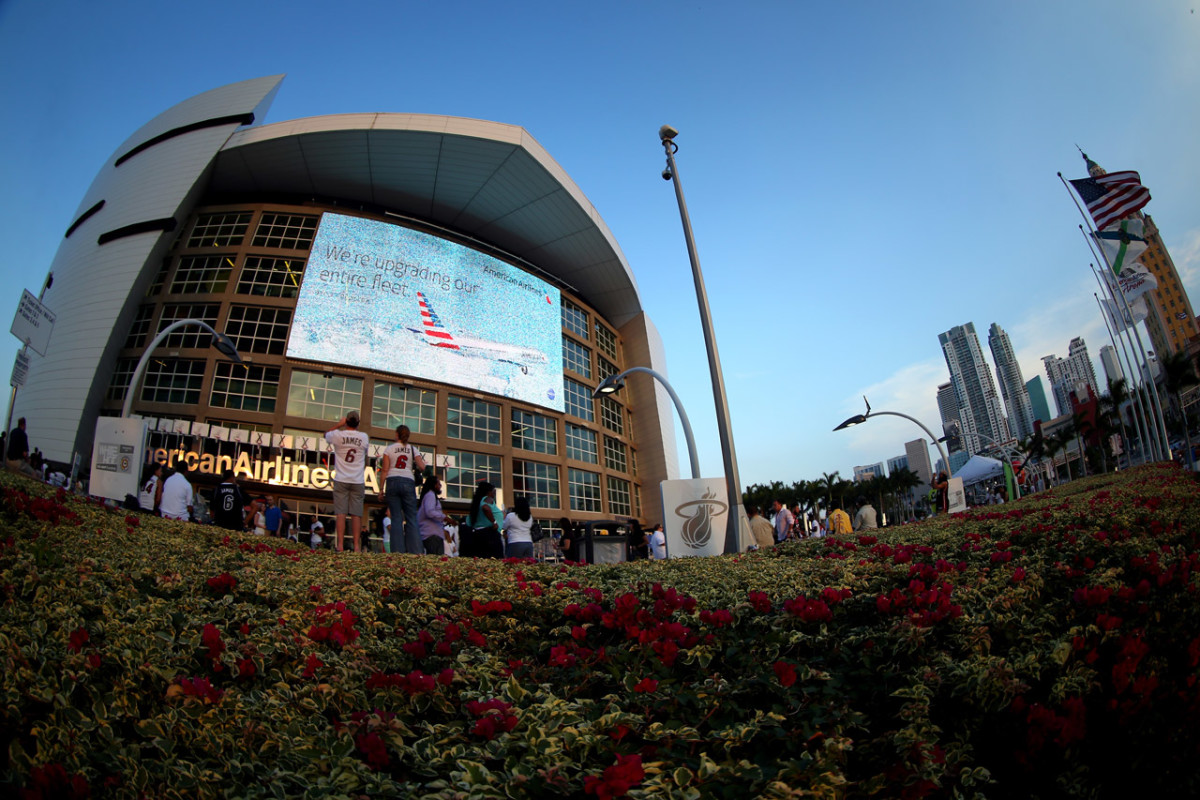
An exterior view of AmericanAirlines Arena (Photo by Mike Ehrmann/Getty Images).
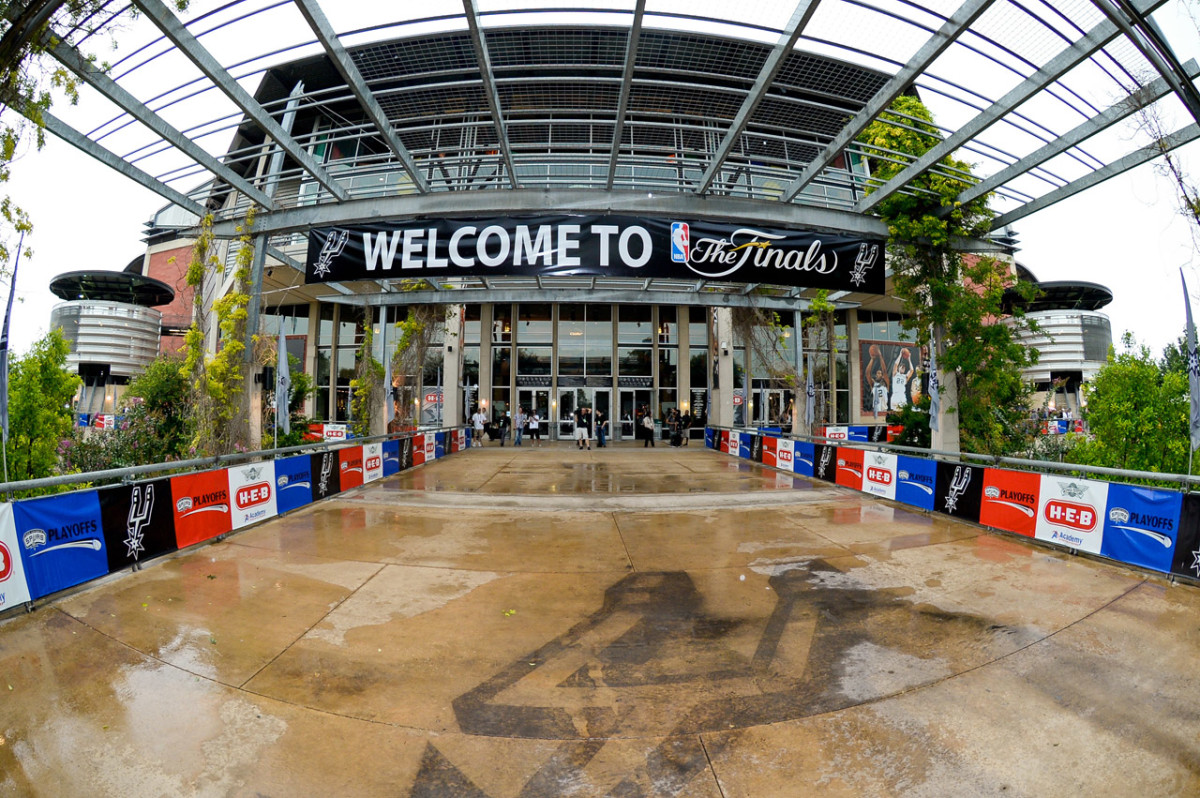
A general view of the exterior of the AT&T Center (Photo by D. Clarke Evans/NBAE via Getty Images).
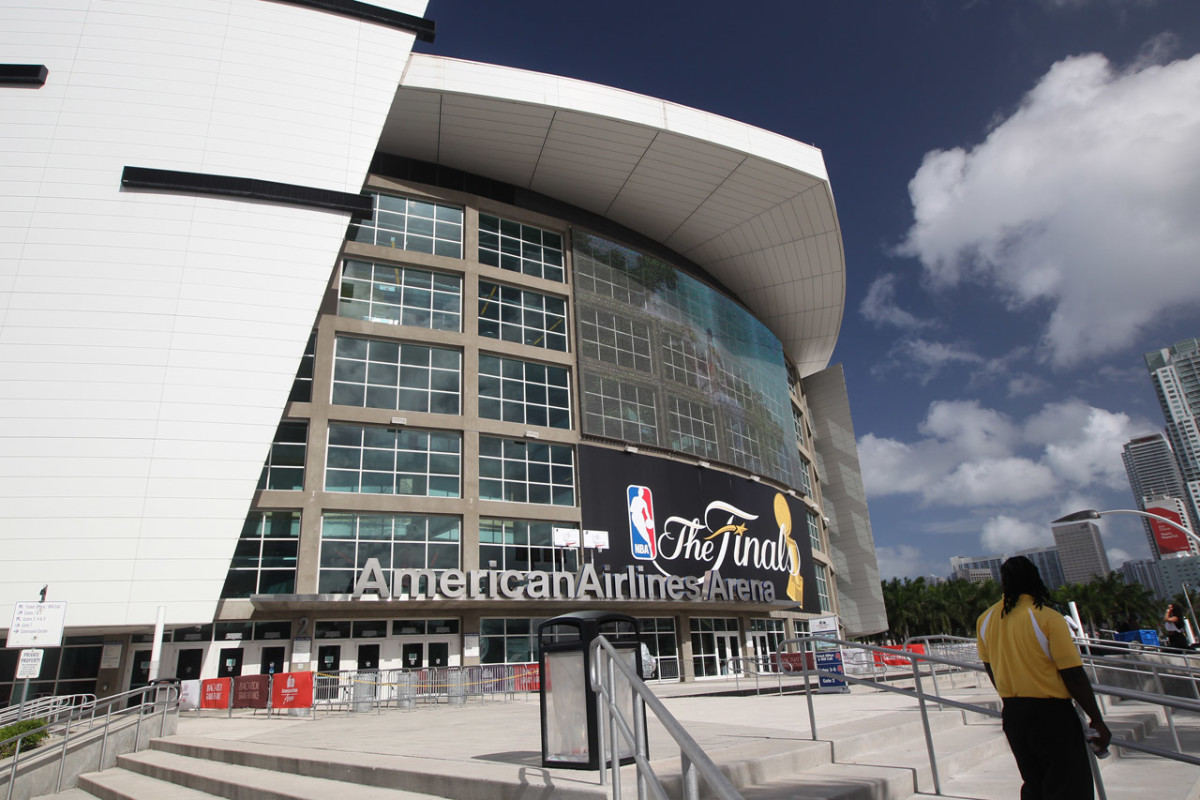
AmericanAirlines Arena (Photo by Bruce Yeung/NBAE via Getty Images)
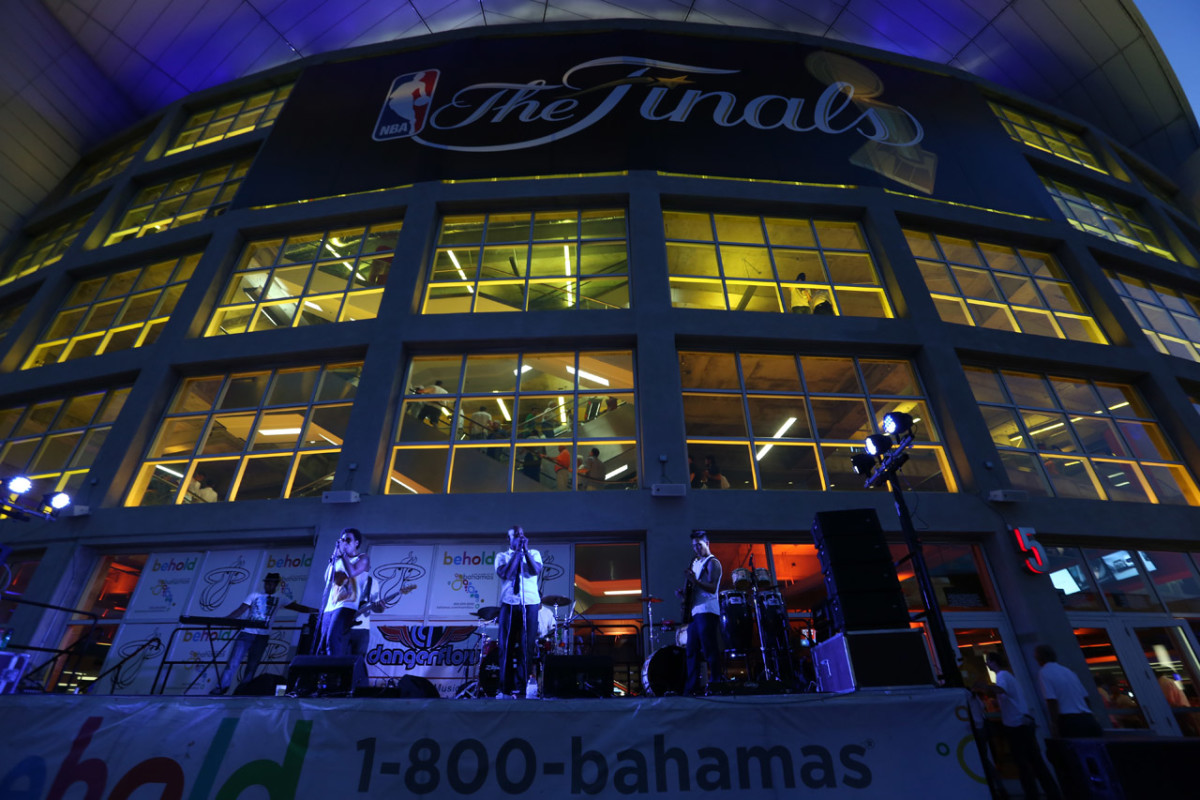
AmericanAirlines Arena (Photo by Gary Dineen/NBAE via Getty Images)
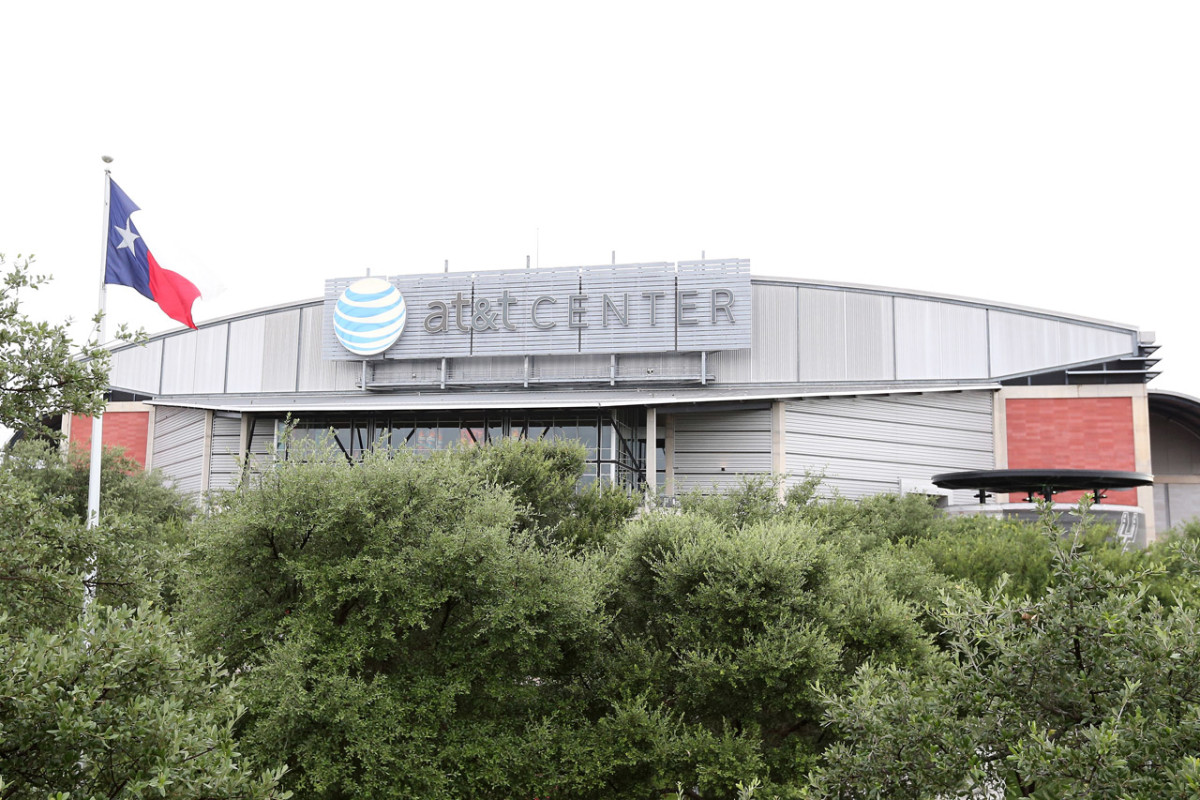
AT&T Center (Photo by Christian Petersen/Getty Images)
Quintessentially fitting their hometowns, the two arenas hosting the NBA Finals boast vastly varied personalities, not unlike the teams and fans that fill them up. In Texas, expect a large venue in wide-open space brimming with Southwestern character. But Florida? Tuck yourself next to the bay and plan for modern architecture and a media barrage.
With the Finals returning to the traditional playoff format of 2-2-1-1-1, we could bounce back and forth between AT&T Center in San Antonio and AmericanAirlines Arena in Miami (not to be confused with American Airlines Center in Dallas, which adds a helpful space to its name and chooses center over arena). So let’s take a look at what we’ll hop between:
The history:
AT&T: The idea of the Alamodome sounded great at one time, but practically speaking the stadium feel of the San Antonio venue left the Spurs wanting a home where they didn’t have to curtain off sections of seats every game. Even though they spent less than a decade in the 9-year-old building, the Spurs were able to partner with Bexar County and open a new 750,000-square-foot basketball-focused home in 2002 for $175 million.
AmericanAirlines: The Heat’s history differs only in name from the Spurs. Miami played in the Miami Arena, which opened in 1988, but less than a decade into the new venue they wanted something larger and, well, fresher. They got their wish, moving three blocks east into the 680,000-square-foot AmericanAirlines Arena in 1999 at a cost of $213 million.
Capacity for basketball:
AT&T: 18,581
AmericanAirlines: 19,500
Location:
AT&T: About three miles from the Alamodome and four miles from the actual Alamo, AT&T Center sits off Interstate 10 next to Freeman Coliseum and the San Antonio Stock Show & Rodeo grounds east of downtown San Antonio.
AmericanAirlines: The Heat’s venue has a hipper address, located in downtown Miami directly bordering Biscayne Bay and with a park and museum to the north.
NEWCOMB: Arena Wars: Madison Square Garden vs. Barclays
Getting there:
AT&T: Just drive, baby. Located directly off Interstate 10, the site certainly has vehicle accessibility and ample parking for the masses. Getting to AT&T Center is about a 10-minute drive from downtown along East Houston or East Commerce streets, all without hopping on the freeway.
AmericanAirlines: Sure, you can choose Highway 1 or Interstate 395 for your route into downtown Miami, but have fun paying to park. The Miami Metrorail has stations within walking distance of the venue, even if there isn’t one directly outside the arena doors.
NBA tickets:
AT&T: During the regular season, the Spurs’ average of about $58 for a ticket was the seventh-most expensive in the league, but still a somewhat reasonable entry price. For the Finals, the prices weren’t skyrocketing to New York-sized levels just a couple days ahead of the first game, with thousands of tickets on the secondary market in the $200 range.
AmericanAirlines: Expect to pay more in Miami. The Heat had the fourth-most expensive ticket during the regular season, averaging over $72. But that hasn’t translated to a major change in the Finals’ entry price, with Game 3 and Game 4 tickets, at least before the series started, still slightly less than $300 a seat.
Other prices:
AT&T: The Spurs have some of the lowest concession prices in the NBA, with the cheapest beer around at $5. Plus, parking at the expansive Texas site was one of the most affordable in the league too, although don’t expect that to stay level for the Finals. A fan affordability index had the Spurs as the ninth-most expensive NBA experience.
AmericanAirlines: Going downtown will bump your prices, including $8 beers and $35 parking. Taking it all into account, while Miami didn’t jump to the top of the money-spending list, they offer the fifth-most expensive NBA experience.
The seats:
AT&T: At least there isn’t a curtain cutting off the spacious venue any longer. The five-level arena sits like one would expect, but does offer a terrace-view restaurant on one end.
AmericanAirlines: With over 2,100 club seats, 80 luxury suites and 76 private boxes, there’s plenty of opportunity for a personalized experience. Of course, that type of viewing comes with a hefty price.
Signature architectural elements:
AT&T: Designed by Ellerbe Becket and local firm Lake | Flato, the exterior was inspired by the “outdoor fiestas and culture of South Texas” with a series of tall porches and broad overhangs, some of which feature cables holding sheet-metal panels, “an idea borrowed from local cattle yards.” The floor sits recessed into the ground, which makes for a lack of stairs to reach the lower bowl. Corner stairs are wrapped in perforated-metal, sun-screened silos.
AmericanAirlines: The Miami-styled modern aesthetic of AmericanAirlines Arena, designed by 360 Architecture and Arquitectonica, also features glass and a MiamiMediaMesh exterior, a 3,400-square-foot LED display on the arena’s west side, the side that faces downtown. Inside, the media blitz continues with an artist-designed scoreboard that has the flair of an underwater sea creature that lights up in a variety of colors (for real). If you’d rather look out than at the media opportunities, the concourses offer views of downtown and Biscayne Bay.
Tim Newcomb covers stadiums, design and gear for Sports Illustrated. Follow him on Twitter at @tdnewcomb.
